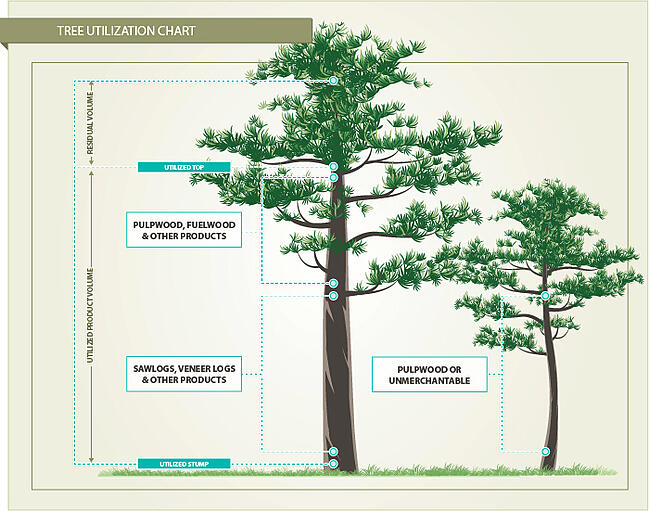How the Timber Industry Promotes Sustainable Forests
“In a sustained forest each generation of trees is an improvement over the previous generation…” says William Plant, President and Founder of American Pole & Timber.
It is worth noting that, in the United States, the growth of pine trees in is outpacing our demand for pine lumber.
When it comes to making a case for the economical and ecological viability of the forest industry, the vast majority is likely to say the practices used are detrimental to the environment. However, this ideology could not be further from the truth. A fairly recent study from the National Alliance of Forest Owners, completed in 2016 and reported on by Forest2Market, shows that the forest industry has contributed to 2.5 million jobs, over 100 billion in annual payroll, and the United States being comprised one-third of forest and woodland.
Sustainability Practices
The United States’ forest industry has proven itself to be sustainable by taking on and optimizing regenerative processes that ensure the woodlands stay forested. Through the practice of silviculture and tree plantation stands, those harvesting trees are able to use them to the fullest without any waste. Silviculture is a common practice in timber production utilized for maintaining the growth, composition, and quality of forests or woodlands to meet values and needs.
Here in the south, pine trees are typically considered to be mature by the time they’re between the ages of 25 and 40 years. With this concept widely accepted, the plantation stands are thinned approximately twice before the final harvest. Once trees reach a large enough diameter, they will be ready for the final harvest. This measurement is referred to as diameter at breast height.
Harvesting for End Product
Just like everything else, though, all trees are not equal. Meaning, even after the harvest, trees will still need to be designated for their intended usage. Older, healthier trees will be typically used for sawlogs, veneer, and plywood among other things. While smaller trees or ones with bends and other defects will be deemed as unmerchantable, and will be used as pulpwood or fuelwood. The latter also aids in helping the environment by allowing milling companies to utilize wood for a cleaner, more eco-friendly burn over fossil fuels.
To read the source article How the Forest Industry Utilizes Harvested Trees in its entirety, click here.
Visit our page about Green Building Materials to learn about eco-friendly products we offer, or go ahead and contact us online or call (800) 816-0335 to get a quote.

